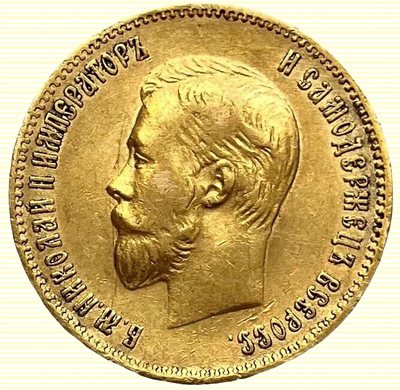An Insight Into Russia’s View on Gold
Alasdair Macleod
 It is a year since Sergei Glazyev, Commissioner for Integration and Macroeconomics within the Eurasian Economic Commission, disclosed his views on gold and its value in trade. Undoubtedly, his opinion carries weight not only with President Putin to whom he is very close, but he also influenced Russian proposals for a new trade settlement currency for BRICS which failed to make the Johannesburg agenda last August. It is a year since Sergei Glazyev, Commissioner for Integration and Macroeconomics within the Eurasian Economic Commission, disclosed his views on gold and its value in trade. Undoubtedly, his opinion carries weight not only with President Putin to whom he is very close, but he also influenced Russian proposals for a new trade settlement currency for BRICS which failed to make the Johannesburg agenda last August.
Published in Vedomosti, the Moscow business paper on 27 December 2022, it is very relevant a year later given Russia’s presidency of BRICS which commenced on 1 January. There follows an English translation of his article in its entirety.
Golden rouble 3
A severe sanctions blockade created the necessary prerequisites for the reversal of Russian foreign trade by 180 degrees. The main foreign economic partners were the countries – members of the EAEU, China, India, Iran, Turkey, the United Arab Emirates, etc. And with each of these countries, the Russian Federation has a surplus in the trade balance. According to a preliminary assessment by the Bank of Russia, in January – September 2022 it strengthened to $ 198.4 billion, which is $ 123.1 billion more compared to the same period last year. This surplus was taken out of the country (while half went to pay off the external debts of Russian companies with their replacement with internal rouble lending) and is reflected in the balance of payments line item “net capital exports”.
In friendly countries, there is a process of de-dollarization, and the share of settlements in soft currencies is growing. In September, Russia became the third country in the world in terms of the use of the renminbi in international settlements. According to the Central Bank, in recent months, the trade in the renminbi accounts for up to 26% of foreign exchange transactions in the Russian Federation. The yuan/roubles pair on the Moscow Exchange has repeatedly overtaken the dollar and euros in terms of daily trading. When used in foreign trade calculations of the Russian Federation, renminbi, rial, etc. and the presence of a trade surplus, the result is the accumulation of multibillion dollar cash balance equivalents on the accounts of Russian exporters in soft currencies in banks of the above partner countries.
The accumulation of funds in soft currencies will further increase. But since this money is also subject to exchange rate and possible sanctions risks, there is a need to sterilize its excess mass. The best way is to buy non-sanctioned gold in China, the United Arab Emirates, Turkey, possibly Iran and other countries for local currencies. Gold purchased by the Russian Central Bank can be stored in gold and foreign exchange reserves, within certain limits in central banks of friendly countries, and can be used for intercountry settlements, currency swaps, and clearing operations. Part of the gold can be repatriated to Russia.
Russia’s transition in relations with friendly countries to trade in national currencies is a true tactical solution, but not strategic. If pricing continues in dollars on Western exchanges and trade flows are insured by English companies, then there is no real isolation from the western “curve mirror” derivative pricing systems.
In conditions of unprecedented sanctions pressure, the task of Russia is not to learn how to play according to the “curve rules” of the West, but to build transparent and mutually beneficial rules of the game with friendly countries, create your own pricing, exchange trading, and investment systems. And gold can be a unique tool to combat Western sanctions if you recalculate the prices of all major international goods (oil and gas, food and fertilizers, metals, and solid minerals). The fixation of the price of oil in gold at the level of 2 barrels for 1g will give a 2-fold increase in the price of gold in dollars, Zoltan Pozar calculated the strategist at Credit Suisse. This would be an adequate response to the “price ceilings” that the West introduces, — a solid foundation. And India and China can take the place of global commodity traders instead of Glencore or Trafigura.
Gold (along with silver) for millennia was the core of the global financial system, an honest measure of the value of paper money and assets. Now the gold standard is considered an anachronism. It was cancelled in its final form half a century ago (the United States announced the temporary closing of the golden window, adopted in 1944 in Bretton Woods) tying the dollar to oil. But the era of the petrodollar is ending. Russia, together with its eastern and southern partners, has a unique chance to jump from a sinking ship of a dollar-centred debt economy, ensuring its own development and mutual trade in accumulated and extracted strategic resources.
Gold played an important role in both industrialization and the post-war refusal of the USSR to join the dollar standard. By signing the Bretton Woods Agreements, the USSR did not ratify them, determining the binding of the rouble not to the dollar (which was a condition for participation in the Marshall Plan), but to gold and to “the entire property of the country”. “Golden rouble 2.0” ensured a rapid economic recovery after the war, allowed the implementation of nuclear and missile projects. Reformer Khrushchev cancelled the binding of the rouble to gold, carrying out a monetary reform in 1961 with the actual devaluation of the rouble by 2.5 times and its pegging to the dollar, having formed the conditions for the subsequent transformation of the country into a raw materials appendage of the Western financial system.
Now the conditions for “Golden Rouble 3.0” have objectively developed.
The sanctions imposed against Russia boomeranged on the western economy. The geopolitical instability they provoked, rising prices for energy and other resources, inflation and other negative factors put strong pressure on the global economy, in particular the global financial market. In 2023, all these circumstances will objectively affect the change in the stereotypes of investment policy in the world – from risky investments in complex financial instruments to invest in traditional assets, primarily in gold. According to Saxo Bank analysts, in 2023 increased demand for this metal will lead to it price rising to $3000. As a result, there is a real opportunity in the very near future to significantly increase reserves due to the increase in physical volumes of gold, and revaluation of its value.
Large gold reserves allow Russia to pursue a sovereign financial policy and minimize dependence on external lenders. The amount of reserves affects the country’s reputation, its credit rating and investment attractiveness. Large reserves allow you to plan the state budget for a long time, buying off many economic and political risks. In 1998, the lack of sufficient international reserves became one of the causes of the crisis, which ended in default for Russia. Now our country already has large gold and foreign exchange reserves, being fifth in the world (after China, Japan, Switzerland and India) and ahead of the United States. But this is not enough.
In China, which ranks first in gold production, there is a legislative ban on the export of all mined gold. According to the Shanghai Gold Exchange, over the past 15 years customers have taken delivery of 23,000 tons in physical form. India is considered the world champion in gold accumulation. Over the past quarter century, gold has been flowing from West to East through the main hubs (London, Switzerland, Turkey, the United Arab Emirates, and others) with a capacity of 2000 – 3000 tons per year. Did the western Central Banks’ official gold reserves remain in their storage facilities? Or has it all gone through swaps and leasing? The West will never say, and Fort Knox’s audit will not.
Over the past 20 years, gold mining in Russia has almost doubled, while in the United States has almost decreased by half. By dismantling real wealth, the United States has lost its competence and interest in the production and processing of strategic resources (gold and uranium, etc.). The printing press funds the purchase of everything they want.
Gold production, which today barely occupies 1% of Russia’s GDP, may well grow (due to the growth of both production and relative oil prices) to 2%—3% GDP and become the basis for the rapid growth of the entire commodity sector (30% of GDP) and the balance of foreign trade, which so far relies on the fiat currencies and the risks of devaluation and insufficient currency convertibility. Instead, Russia will be able to increase gold production from its three large, already commissioned fields from 330 tons to 500 tons, becoming a world leader in this strategic industry. Bonus: we get a strong rouble, strong budget and — in implementing the advanced development strategy, a strong economy.
Authors – Academician of the Russian Academy of Sciences Sergey Glazyev and Executive Secretary of the NTS under the Chairman of the EEC Board Dmitry Mityaev

Alasdair became a stockbroker in 1970 and a Member of the London Stock Exchange in 1974. His experience encompasses equity and bond markets, fund management, corporate finance and investment strategy. After 27 years in the City, Alasdair moved to Guernsey. He worked as a consultant at many offshore institutions and was an Executive Director at an offshore bank in Guernsey and Jersey.
www.goldmoney.com
|


